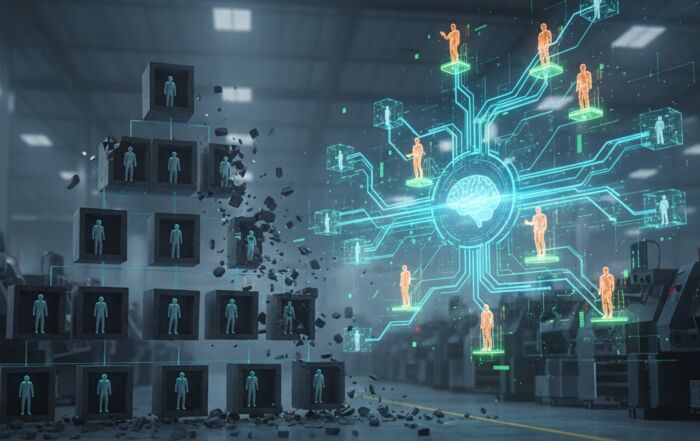Share
Author
Corevist Marketing Team
Share
Your Org Chart Is Lying To You
In the next few years, a surprising number of boxes on the org chart will belong to AI agents. That shift forces a rethink of how teams are structured, how work flows, and how leaders create value.
Why this matters now
AI agents are moving from experiments to everyday tools. They execute repeatable steps, hand off edge cases, and learn from feedback. The result is fewer manual touches and cleaner handoffs across operations, sales, service, and IT. When the work changes, the roles change with it.
What changes first
Execution gets automated, so human work moves upstream. Teams spend more time on exceptions, proactive planning, and continuous improvement. Entry-level roles start by supervising an agent, interpreting insights, and refining the playbook. The job ladder begins with judgment and systems thinking rather than repetitive tasks.
Managers shift from task assignment to orchestration. The value isn’t in chasing status anymore. It’s in designing workflows, configuring agents, resolving edge cases, and integrating outputs across functions. Performance shows up in the quality of the combined human and agent system and the outcomes it produces.
Accountability stays with people even when agents recommend or act. Each agent needs a named owner, a defined scope, clear decision boundaries, explicit escalation triggers, and a feedback loop that improves behavior over time. If these basics aren’t in place, risk scales as quickly as automation.
Leadership evolves as well. Leaders get closer to the technology to understand capabilities, limits, and fit with strategy and culture. Teams build practical skills in prompt design, data literacy, workflow design, and exception management. At Corevist, we run short workshops and ask each role to identify where an agent can automate or accelerate daily work. The hard part is trust and change management as much as technology.
A simple operating model you can adopt
Start by defining who owns the agent, who operates it day to day, who stewards the data it relies on, and who reviews risk. Write a one-page charter that states purpose, scope, inputs, outputs, key metrics, and failure modes. Add a decision matrix that spells out what the agent decides, what it only recommends, and what it must escalate. Document a runbook with steps, prompts, validations, and rollback paths. Keep an audit log so actions, rationales, and exceptions are traceable. Review exceptions daily. Review quality and KPIs weekly. Revisit scope, risk, and ROI quarterly.
Manufacturing context
Good first fits tend to be order status and exception detection, product discovery issues on the storefront, pricing and availability checks, and routine customer communications. Direct integration to the system of record matters here. When agents act on authoritative data and write back cleanly, outcomes improve and rework falls.
How to start in 90 days
Pick a workflow with clean data and repetitive rules. Write the charter and decision matrix before you touch prompts. Define the human escalation path. Instrument volume, accuracy, time saved, and downstream rework. Launch to a small slice of traffic. Iterate. Expand scope only after the exception rate drops and the audit trail proves reliable. Then add a second agent that hands off to the first.
The end state
By 2030, organizations will look less like pyramids and more like fluid networks of humans and agents. Work moves faster. Roles tilt toward design, oversight, and improvement. The org chart becomes a map of responsibilities and interfaces rather than a static hierarchy.
Better to design that future than be surprised by it.








